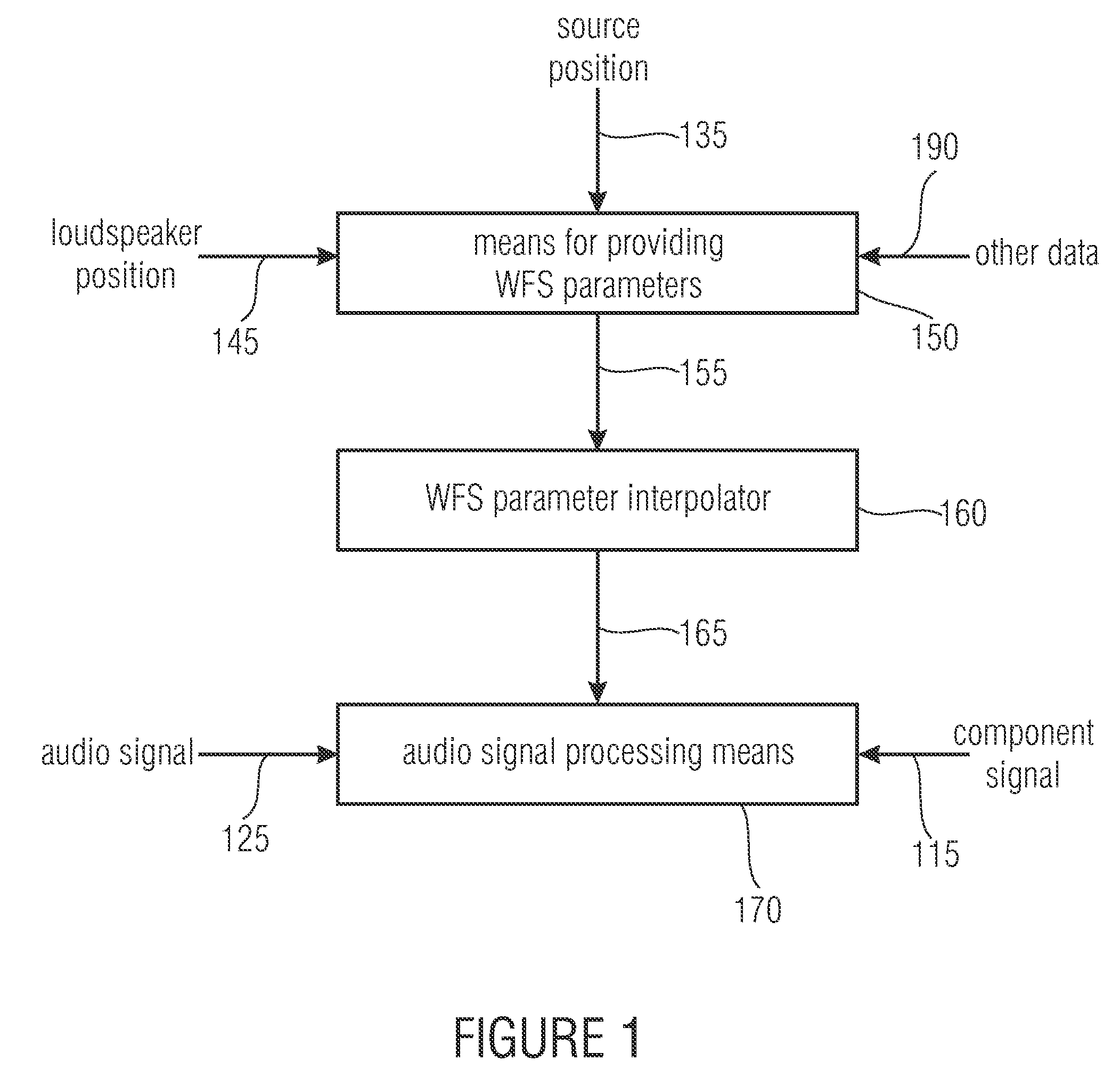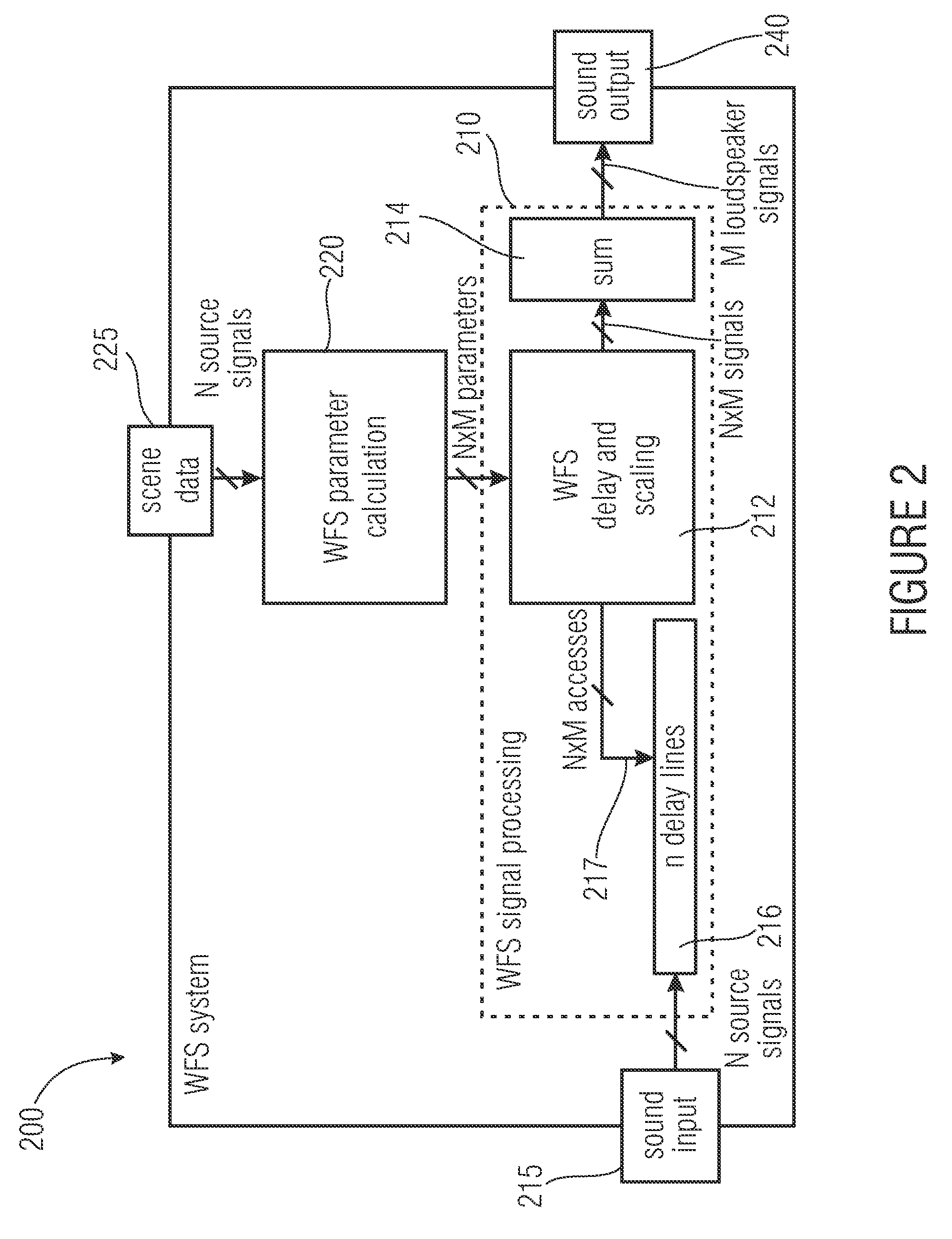Device and a method for determining a component signal with high accuracy
a component signal and high-accuracy technology, applied in the field of audio reproduction methods, can solve the problems of series of characteristic errors, increase of error of most delay interpolation algorithms, and high processing cost of wfs audio reproduction method, so as to improve the utilization of delay interpolation and suppress audible artefacts.
- Summary
- Abstract
- Description
- Claims
- Application Information
AI Technical Summary
Benefits of technology
Problems solved by technology
Method used
Image
Examples
Embodiment Construction
[0097]With regard to the description which follows, it should be noted that in the different embodiments, functional elements that are identical or have identical actions bear identical reference numerals and that, therefore, the descriptions of said functional elements are interchangeable in the various embodiments presented below.
[0098]Before the present invention is addressed in detail, the fundamental architecture of a wave field synthesis system shall be presented below with reference to FIG. 11. The wave field synthesis system has a loudspeaker array 700 that is placed in relation to a demonstration area 702. Specifically, the loudspeaker array shown in FIG. 11, which is a 360° array, comprises four array sides 700a, 700b, 700c and 700d. If the demonstration area 702 is a movie theatre, for example, it shall be assumed, with regard to the conventions of front / back or right / left, that the movie screen is located on the same side of the demonstration area 702 on which the sub-ar...
PUM
 Login to View More
Login to View More Abstract
Description
Claims
Application Information
 Login to View More
Login to View More - R&D
- Intellectual Property
- Life Sciences
- Materials
- Tech Scout
- Unparalleled Data Quality
- Higher Quality Content
- 60% Fewer Hallucinations
Browse by: Latest US Patents, China's latest patents, Technical Efficacy Thesaurus, Application Domain, Technology Topic, Popular Technical Reports.
© 2025 PatSnap. All rights reserved.Legal|Privacy policy|Modern Slavery Act Transparency Statement|Sitemap|About US| Contact US: help@patsnap.com



